Trifolium willdenovii, Tomcat Clover
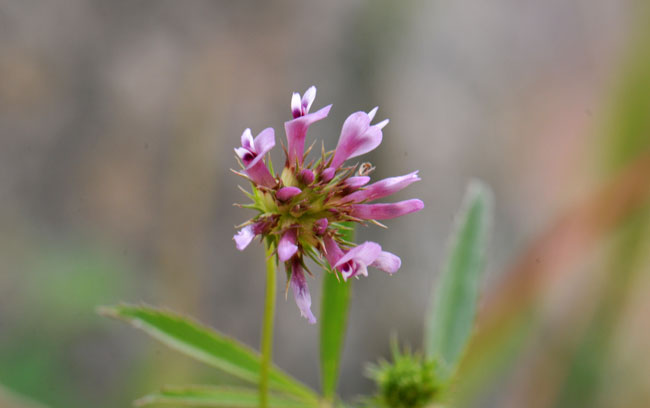
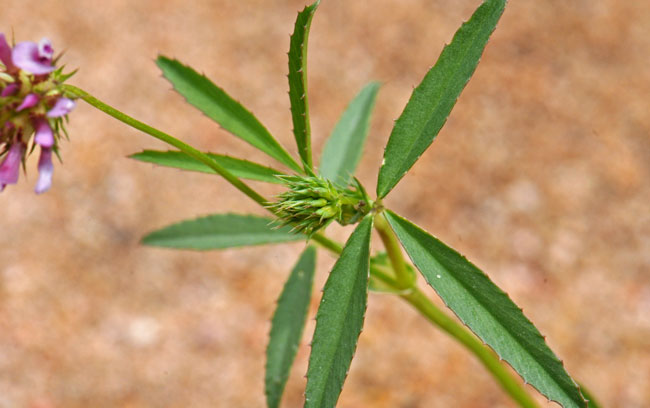
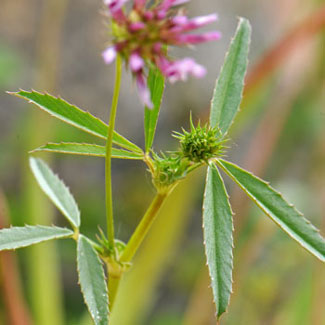
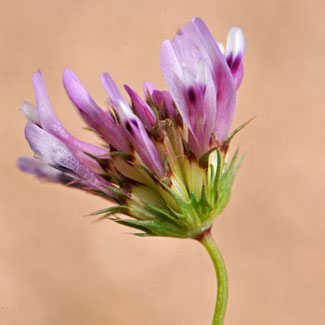
Common Name: Tomcat Clover
Also Called: Sand Clover, Springbank Clover
Family: Fabaceae or Leguminosae Family
Synonyms: (Trifolium tridentatum, Trifolium tridentatum var. aciculare, Trifolium tridentatum var. clivorum, Trifolium tridentatum var. tridentatum, Trifolium willdenowii)
Status: Native
Duration: Annual
Size: Up to 8 inches (20 cm) more or less.
Growth Form: Forb/herb; stems erect, or spreading, more slender and smaller in southern areas, more robust in northern climates with increased moisture, glabrous.
Leaves: Green; compound, leaflets mostly linear, toothed.
Flower Color: Purple, purple-pink; inflorescence head-like flowers, small but showy, fruit a legume, 1 or 2 seeds.
Flowering Season: April to June, blooms earlier (April) in the southern part of the state, May to June in California.
Elevation: Below 5,000 feet (1,524 m)
Habitat Preferences: More common in northern elevations, disturbed areas with moisture, heavy soils.
Recorded Range: In North America, Tomcat Clover is found in the west, primarily the coastal states and in Arizona and Idaho; AZ, CA, ID, OR, TX, WA and British Columbia, Canada. In Arizona it is found in the central and southern parts of the state. They are also native to Baja California, Mexico and south to South America.
North America & US County Distribution Map for Trifolium willdenovii.
North America species range map for Tomcat Clover, Trifolium willdenovii:
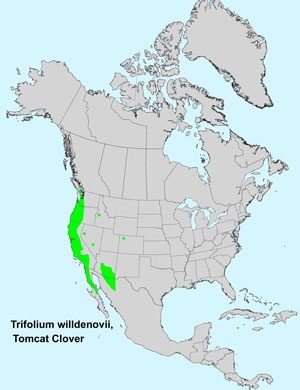
U.S. Weed Information: Unknown
Invasive/Noxious Weed Information: Unknown
Threatened/Endangered Information: Unknown
U.S. Wetland Indicator: In North America Trifolium wildenovii has the following wetland designations:
FACW = Facultative Wetland, usually occur in wetlands, but may occur in non-wetlands
FACU = Facultative Upland, usually occur in non-wetlands, but may occur in wetlands Genus Information: In North America there are 116 species for Trifolium. Worldwide, World Flora Online includes 367 accepted species name for the genus.
The genus Trifolium was published in 1753 Carl Linnaeus, (1707-1778).
In the Southwestern United States: Arizona has 20 species of Trifolium genus, California has 51 species, Nevada has 22 species, New Mexico has 19 species, Texas has 16 species, Utah has 18 species. All data approximate and subject to revision.
Comments: The photo above was taken April 06, 2011 (about 3,500 feet (1066 m)) near Sycamore Creek west of Mount Ord, Tonto National Forest, Arizona.
In Southwest Desert Flora also see Pinpoint Clover, Trifolium gracilentum.Tomcat Clover, Trifolium willdenovii has attractive flowers, the flowers and their plants may be visited by butterflies, moths, flies, honeybees, Native Bees and other insects in search of food and nectar.
According to the Encyclopedia of Live, Tomcat Clover is a host plant for the butterflies listed below.
Find out more here from Butterflies and Moths of North America.
The genus Trifolium was published in 1753 Carl Linnaeus, (1707-1778).
The species epithet willdenovii is named in honor of Carl Ludwig Willdenow (1765-1812) eminent German botanist and taxonomist.
The taxon “Trifolium willdenovii” was described in 1826 by Curt (Kurt, Curtius) Sprengel, Polycarp Joachim (1766-1833).

